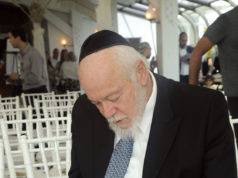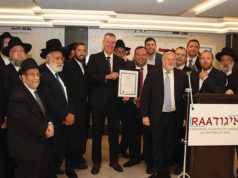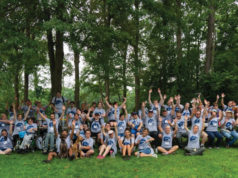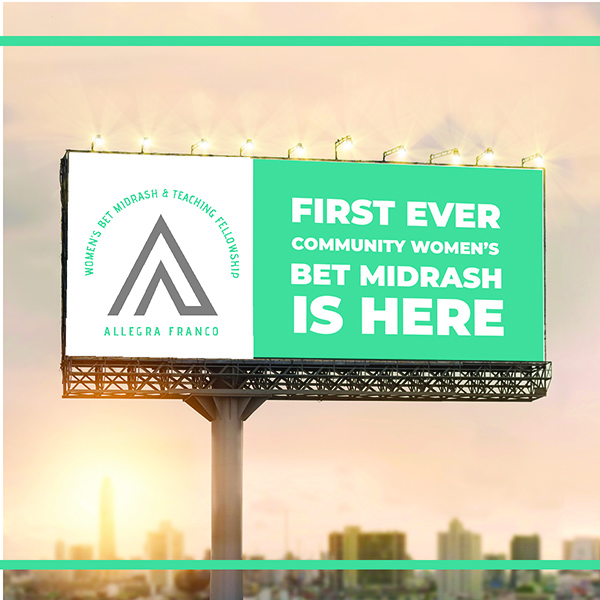
On any given Monday or Wednesday this summer, you’ll find me riding up to Larchwood Synagogue on my bike (or in a car on a lazy day). I walk down the path behind the building, and duck beneath the rows of canopies to sit down at ONE of the tables and chairs provided. I take out my humash, open to Sefer Bemidbar, and rub my hands together in anticipation for today’s packet of sources, painstakingly and generously put together by Rabbi Albert Setton. When I skim through the subject matter, my heart flutters with anticipation. I have not studied Parashat Korah since high school, and I can’t wait to see what I’ll discover today about myself, my religion, and my fellow students.
The two hours fly by quickly, and somehow we’ve touched upon crowd psychology, the purpose of a “good” or productive rebellion vs. a “bad” or nefarious one, the prominence of roles and boundaries in Judaism, and why Ramban’s argument here might hold more water than Ibn Ezra’s on the timing of this event. The thing is—we haven’t even gotten through half of today’s sources.
I leave with my brain tingling. I leave feeling invested in the words, the story, the lessons. I leave feeling closer to the Torah than I have felt in years.
When I tell my family and friends that I am participating in Allegra Franco’s first ever Bet Midrash for women in the community, they raise their eyebrows in surprise. Let’s just say I’m usually the one questioning how the stories and laws in the Torah apply to my life as it is now. Growing up, I attended a yeshivah that tried its very hardest to impart the lessons of the Torah through the words of the Tanach and the Mikraot Gedolot. From Bereshit to Debarim to Melachim 2 and on, I watched the realization of one G-d dawn onto one man and then flourish into a nation that defeated its enemies and then, ultimately, defeated itself. I learned how that tradition was preserved throughout thousands of years, with discussion and self-imposed boundaries between us and other nations.
Yet, I never felt like part of that story. I always felt like the story was being told to me by someone else. I might have been projecting my own feelings of insecurity, but I felt that my interpretations of the text didn’t matter in the face of these untouchable Gedolim who had already laid the path out for me.
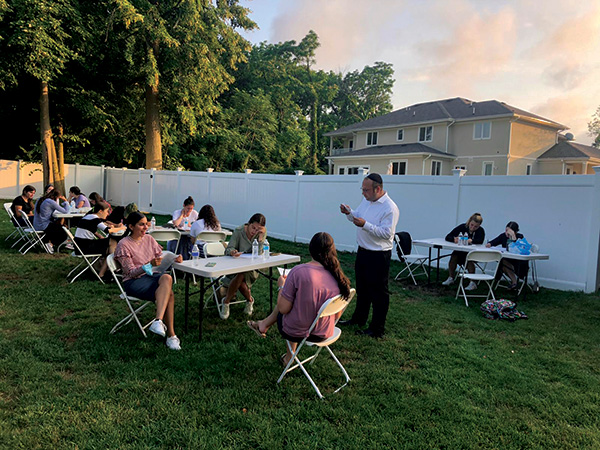
That was until I saw the introductory video about the Bet Midrash during a women’s Zoom learning session the night before Ereb Shabuot. That night, the participants were provided with a source sheet on the subject of women learning Torah. I believe the content was meant to light a fire under the participating women. We all came back from our Breakout Sessions ready to defend our capability in the face of what Rambam had to say on whether women could take the Torah seriously or not! Once we were mollified by Rabbi Setton’s explanation that we now live in a time when women are more scholarly and therefore able to handle the study of Torah, we watched the video on a new Bet Midrash initiative. My heart was pounding as the Rabbi fielded questions, and as I began to understand that this is the kind of Torah-learning I had been waiting for my entire life.
“Is this only for people who want to be teachers?”
No.
“So it’s open to anyone who wants to study?”
Yes.
“Does this have a typical class format, with a teacher teaching and students listening?”
No.
This is two women sitting down and discussing the text together, much like the Habruta format used in a common Bet Midrash. I signed up immediately to study Sefer Bemidbar. I had always seen Sefer Bemidbar as a strange collection of numbers and names, with several extremely dramatic occurrences strewn throughout that would change the trajectory of an entire generation of desert-dwellers. Under Rabbi Setton’s watchful eye, it has become so much more than that.
I still have chills when I think about the day we were given our source sheet on Sotah. From what I vaguely recalled learning back in high school (over fifteen years ago!), this was some crazy law that allowed a man to put his wife through public humiliation because he suspected she was cheating on him. If it got to the point when the woman was brought before the Kohen, her guilt or innocence would be determined when she drank bitter waters prepared for this very purpose. If she was guilty, her belly would swell and explode. If she was innocent, nothing would happen. And after all that, her reward for being innocent was to have a child with the very man who put her through this whole thing!
I almost dared anyone there to convince me this wasn’t some example of how women were treated unfairly. My partner Aimee and I began to dig into the text. First we went through the peshat. We went a little deeper, and learned about all of the pieces that would have to be in place for a couple to even get to the point where the drinking of the bitter waters would be necessary—how many warnings, or witnesses, or opportunities both parties had to back out of this ordeal!
We learned that the woman had the ability to back out and demand a divorce. We learned that the waters wouldn’t work if the man had any sin on his conscience. We learned when witnesses were needed and what words needed to be spoken.
At first, all of these steps and conditions seemed tedious, but Rabbi Setton asked in his amused, quiet manner, for us to carry on to the end.
We came to the end with an astounding realization. At the end of the day, after very specific conditions were met that allowed for a couple to make it this far into the process, the only reason a woman would stand before her husband, the Kohen, and the gathered, and take a chance in drinking those waters, was to prove her innocence to her husband so that they may start a new life together free from the suspicion and guilt.
We suddenly understood why pregnancy would be a natural reward with that intent. I was floored! I went out with friends that night and, still thrilled with my realization, explained to everyone what I had learned that day. That week at shabbat dinner, I described to my family the moment I understood that sotah was more marriage counseling than public humiliation. Why was it different to have learned about sotah this way? Wouldn’t it have been the same if I had asked a rabbi this question, on why a woman should be treated this way, and he came back to me with this explanation? I would argue that, no, it would not have been the same.
I went into that day’s session with my own prejudices. When that happens, no amount of explaining, even by a rabbi I greatly admire, could completely erase that uneasy feeling. But through our study and discussion, Aimee and I were able to grasp the deeper meanings of the text. Our dialogue was at times fiery, at times confused, at times in sync. Yet always, we felt like we were forging our own connections with the text. Rabbi Setton may have given us the pile of cobblestones, but we laid down the rocky pathway to understanding through our own struggle with the words of the parasha.
The Allegra Franco Women’s Bet Midrash and Teaching Fellowship Program stemmed from the idea that in order to turn out solid Judaic Studies teachers, teachers need to own the material they are teaching, not just relay to their students what they themselves had learned. Imagine how much more passionate a teacher would be about making sure her students understand the lessons of sotah when she herself had grappled with the content herself! Imagine how much more receptive to questions she would be when she herself had learned in an atmosphere that didn’t just tolerate questions, but welcomed them!
I feel so grateful that the Bet Midrash opened its doors to all women, not just those seeking to become teachers. I am so excited to delve into Sefer Tehillim this fall. I am so excited that this Bet Midrash opened up a part of my brain that was beginning to grow dusty from years out of practice. I am excited about everything I’ve learned, and everything I have yet to learn.

